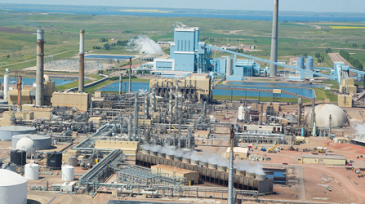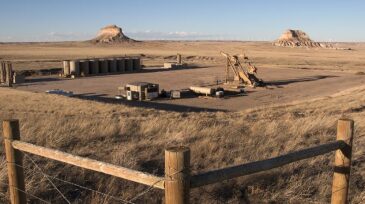Environment
Buoy-based camera footage, analyzed by artificial intelligence, can help reduce the risk of birds colliding with offshore wind farm turbines.
The Dutch marine contractor says it plans to outfit its construction vessels with small modular reactors over 5 years.
The urgency of methane emissions reduction in the oil and gas sector demands a strategic approach to change management. Success hinges on fostering a shift in industry mindset, where emissions reduction is embedded into operational design and decision-making rather than seen as a regulatory burden.
-
The New Mexico State Land Office announced that it will be halting the practice of allowing fresh water to be pumped from state trust land and sold for use in oil and gas development.
-
Brian Sullivan, the executive director of IPIECA, the global oil and gas industry association for advancing environmental and social performance, lays out the organization’s plans to adapt to a changing world while supporting the energy transition and sustainable development.
-
Some of the world’s largest oil companies are hoping to convince the US Supreme Court to decide whether they should be held liable for climate change.
-
Texas’s main oil regulator has been prohibited from waiving environmental rules and fees, measures adopted to help drillers cope with the pandemic-driven slump in crude prices.
-
The Great Plains Synfuels Plant in North Dakota has now captured 40 million metric tons of carbon dioxide, a milestone in the synthetic natural gas production facilities’ 20-year effort to lower the impacts of energy production.
-
This paper presents a novel matrix to identify environmental and social elements relevant for the development of oil and gas projects. It also proposes a useful traffic light and multivariate analysis methods for the evaluation of these elements.
-
Down to its final weeks, the Trump administration is working to push through dozens of environmental rollbacks that could weaken century-old protections for migratory birds, expand Arctic drilling, and hamstring future regulation of public health threats.
-
A system was designed to extend the offshore wind-energy concept from the power grid to a subsea field-development application. The system integrates a floating foundation with a wind-turbine generator, with all the required utilities hosted directly onboard the same floater.
-
The practice of burning off natural gas is relatively rare in Colorado, but tough rules on flaring and venting may help the state meet greenhouse gas reduction goals.
-
This paper presents a ubiquitous sensing network that has been developed, tested, and piloted at several oil and gas facilities as well as at an in-house simulated well site. The system integrates wireless methane sensor nodes, weather sensors, and other edge devices for autonomous operation.













